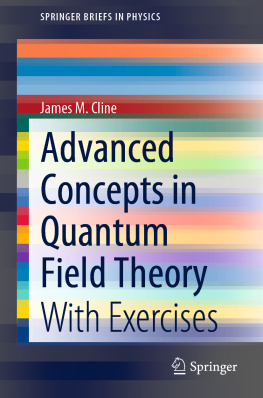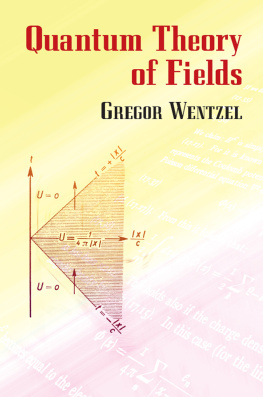1. Introduction
Quantum field theory is not the first place a combinatorialist is likely to look for interesting problems or to look to apply their techniques. On the other hand, from the physics side, too often combinatorics is viewed as a kind of uninteresting messy detail. However, there is actually a lot of beautiful and useful combinatorics in quantum field theory, and the discrete structures illuminate the physical structure. Neither side is necessarily well positioned to penetrate the literature of the other.
This brief explores combinatorial constructions and discrete-flavoured problems from quantum field theory in a way which is intended to be natural and appealing to a mathematician with a combinatorics background as well as being accessible to mathematical physicists and other mathematicians. It is not comprehensive, but rather takes a tour, shaped by the authors biases, through some of the important ways that a combinatorial perspective can be brought to bear on quantum field theory. In order to retain a strong sense of the overall story and not get lost in the details, the main focus is on giving the objects, constructions, and results in a uniform language, and giving an intuition of why these things are important. Proofs are given when insightful, but others are left to the literature.
This brief has three parts. In the first part the preliminary material will be set out. The second part will discuss Dyson-Schwinger equations. The third part will discuss Feynman graph periods. The second and third parts are largely independent of each other and can be read in either order.
The first stop on this tour will be a rough overview of what quantum field theory is all about. Then we will proceed to set up an enumerative framework in Chap. setting up Feynman graphs from a combinatorial and graph theoretic perspective.
Dyson-Schwinger equations are the quantum analogues of equations of motion and so are physically important. Combinatorially they act as a kind of specification and so have a natural enumerative flavour. The Dyson-Schwinger part of the brief begins by setting up Dyson-Schwinger equations in Chap. describing recent results on viewing log expansions with combinatorial tools.
The final part turns to individual Feynman graphs and Feynman integrals with a focus on a particular renormalization scheme independent residue known as the Feynman period. Chapter with a brief review of some of the more combinatorial aspects of the Feynman integration algorithms which have been built around these ideas.
2. Quantum Field Theory Set Up
Some standard introductions to quantum field theory are []. For the reader who is not familiar with these ideas we will briefly go over the intuition of what quantum field theory is along with some of the key vocabulary. Many readers would be safe skipping this chapter either because they are familiar with this material or because they are more interested in the problems which appear later than in their motivation.
Quantum field theory is a framework in which we can understand arbitrary numbers of interacting particles quantum mechanically. It is the standard way to unify quantum mechanics and special relativity. The particles in question can be subatomic particles in high energy physics in which case quantum field theory, through the standard model, describes all known particles extremely well. The particles can also be quasiparticles in condensed matter physics and so quantum field theory is a useful tool for understanding condensed matter systems and the mathematician or mathematical physicist gets new theories to play with.
In either case, the fundamental thing a quantum field theory describes is how particles interact and scatter, so one imagines an idealized experiment where some known particles are sent in, collide and interact in some way, and then what comes out is detected. Since we dont know what happened in the collision we, in the spirit of quantum mechanics, take a weighted sum over all possibilities. Any particular story of what the particles did traces out a graph in spacetime with the interactions as vertices and the edges as particles propagating. Combining together those possibilities which after forgetting the spacetime embedding give the same graph, we obtain Feynman graphs, for precise definitions.
Fig. 2.1
Example Feynman graphs
The weight of the graph in the sum is its Feynman integral. The weighted sum itself is a perturbative expansion for the scattering amplitude in question. Well also see this kind of sum, over appropriate graphs, as Green functions when we come to Dyson-Schwinger equations .
Feynman integrals are, in general, very difficult to compute and there is a whole part of high energy physics devoted to the technique and practice of computing them, with the practical aim of computing backgrounds for accelerator experiments and making predictions, see for example the proceedings [ for more on renormalization. Finally, the sums of Feynman integrals contributing to a given process are expected to be divergent for all interesting cases.
From a discrete math perspective, taking a Feynman-graphs-first approach to quantum field theory is quite appealing, as we have graphs playing a central role. Furthermore we have series indexed by graphs which are divergent and hence as a first step are reasonably thought of as formal. There are other less apparent reasons why this is a nice perspective for those with discrete tastes: the structure of the renormalization process is captured with a combinatorial Hopf algebra and important integral and differential equations come from decompositions of combinatorial objects , all of which we will investigate over the course of this brief.
There is a downside to a Feynman-graphs-first approach. The series in question are expected to be divergent in the cases that matter and so they can only be asymptotic series for the presumed functions which describe the physical processes in question. That is, a Feynman-graph-first approach is a perturbative approach. By itself a perturbative approach does not have access to any phenomenon which is asymptotically flat at the point around which we are expanding, that is it cannot see the instantons in the theory or any other nonperturbative phenomenon . Fortunately, we can access these things by the back door: a Feynman-graphs-first approach doesnt mean a Feynman-graphs-only approach. The way to do this is as follows. The recursive structure of the Feynman graphs and the perturbative expansion give us functional equations for the perturbative expansions. Since these underlying structures are not mere combinatorial happenstance but reflect the physics, they also hold non-perturbatively and so the functional equations can be upgraded to non-perturbative equations where they, potentially at least, can see nonperturbative effects. The functional equations of this type we understand best are Dyson-Schwinger equations. That is why Dyson-Schwinger equations are very important in this approach. To date this is a mere sketch and a lot of work remains before these ideas could be used foundationally for quantum field theory.













